How does AC, single-phase and three-phase electricity work?
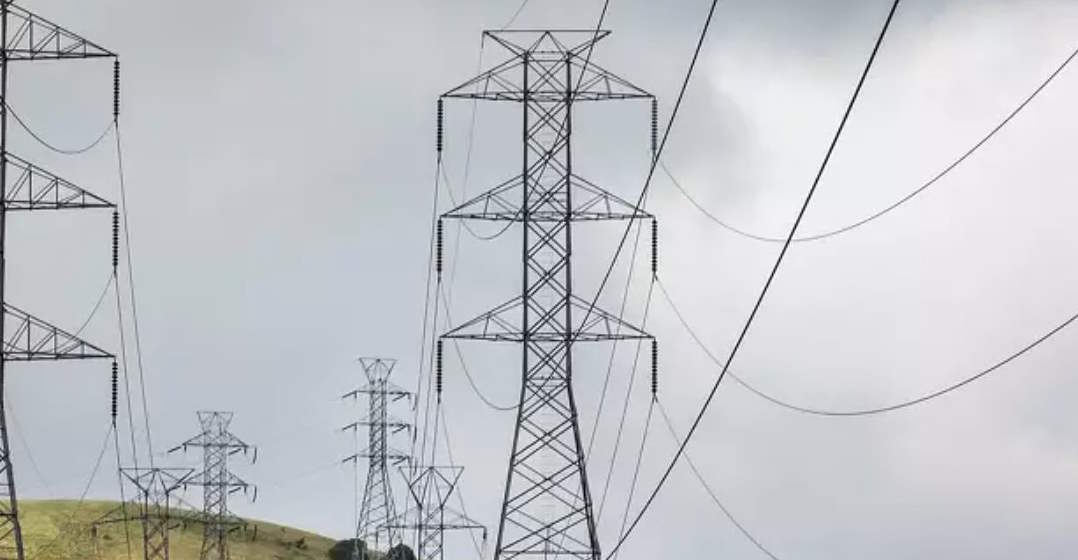
Electricity is either produced as Alternating Current (AC) or Direct Current (DC). In this article, we will focus on AC after having an understanding of both.
The difference between AC and DC lies mainly in their voltages and currents. Current is the flow of electrons in the same direction. Voltage is the force that drives electrons to flow in the same direction.
Direct Current Electricity.
Direct current electricity is a type of electricity in which electrons flow in only one direction. The voltage and current in direct current electricity do not vary in magnitude.
The flow of electrons in one direction in DC electricity is due to fixed positions between the negative and positive polarities, that is the polarities in DC do not exchange positions.
Electrons always flow from negative polarity to positive polarity, if the positive and negative polarities keep their positions, electrons will continue to flow in one direction towards the positive polarity.
DC sources like batteries have definite poles which shows the positive and negative side so that electrical appliances are correctly connected.
DC electricity is the one produced by solar panels and stored in batteries. The following graph shows DC current and voltage values plotted against time.

On the previous graph, the values of DC voltage or current at any instant times are the same as shown by a straight line which is in parallel to the horizontal axis. This shows that DC voltage and current have a constant magnitude.
Alternating Current Electricity.
Alternating Current Electricity is a type of electricity in which electrons change the direction of flow. The magnitude of current and voltage vary regularly.
In AC electricity, electrons move forward and backward due to exchange of positions between the positive and the negative polarities.
As mentioned earlier, electrons always flow from negative polarity to positive polarity. When the two polarities exchange positions, electrons also change the direction of flow so that they continue flowing towards the positive polarity.
There are various ways in which polarities are made to exchange positions, one of them is by moving the magnetic field across a conductor.
How AC voltage and current are generated?
When the magnetic field produced by permanent magnet and electromagnet is moved across a conductor or a conductor moved across the magnetic field, voltage is induced in that conductor.
NB - When the magnetic field is moved along a conductor there is no induced voltage in the conductor.
If a conductor forms a closed circuit, the induced voltage will causes electrons to flow in a conductor since electrons flow in a complete circuit. This is generally how AC voltage and current are generated.
Have you ever played around with a permanent magnet and noticed that one side of a magnet attract metals and the other repel metals. This is due to charges on electrons and protons in metals and the effect of magnetic field.
When a magnetic field is moved across a conductor in first direction, it can first repel electrons, causing electrons to take a certain direction of flow. When the magnetic field is moved in the other direction, it will attract electrons, causing them to change the direction of flow.
What actually happens when moving a magnetic field across a conductor is that the polarities responsible for the flow of electrons are exchanging positions that results in the change in direction of flow of electrons.
Instead of moving the magnetic field across a circuit conductor, we can rotate the magnetic field covering the circuit conductor coils as shown below. This is how most generators work because the method is cheaper than moving the magnetic field across a conductor.
The coiling of a conductor as shown in the diagram below, is to increase the length of a conductor inside the rotating magnetic field. Increasing the length of a conductor inside a magnetic field, increases the amount of voltage induced in the conductor.
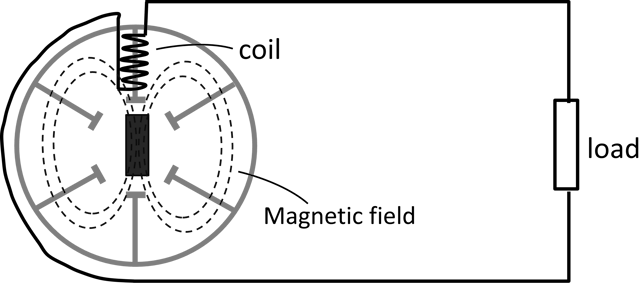
The previous diagram illustrates the structure of an ac generator (alternator). The magnetic field of a generator is made to rotate with the help of steam or water turbines.
Why AC varies in magnitude?
What causes the magnitude (amount) of AC voltage and current to vary with time is the amount of magnetic field cutting across a conductor.
In rotating the magnetic field covering stationary coils, at some points there will be no magnetic field cutting across the coils and the induced voltage will be zero.
At some other points the whole magnetic field will be cutting across the conductor coils, and the induced voltage will be at maximum.
Finally, at some other points the magnetic field will be partly cutting across the conductor coils, the voltage induced will be between zero and maximum.
The following waveform is a sinewave that shows the AC values of voltage and current plotted against time.
NB - A Waveform is any graph of quantities with values that continually vary with time. A sinewave is an S-shaped graph that AC voltage and current follow when flowing.
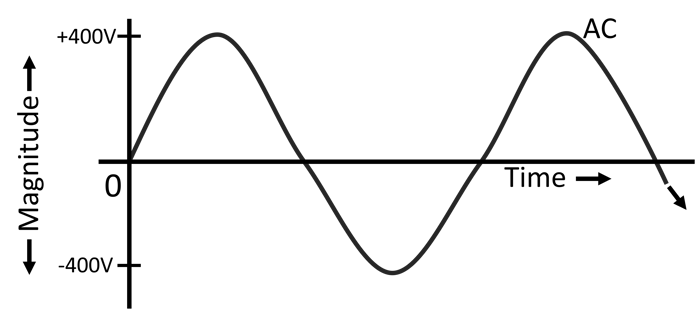
As shown in the following AC sinewave graph, in AC we have:
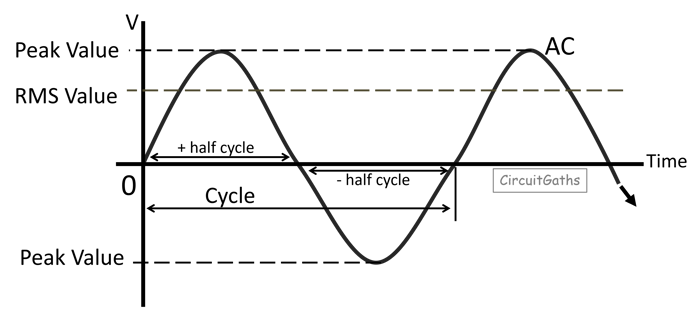
A Cycle
A cycle is a complete rotation of magnetic field. When a magnetic field covering the coils of a generator rotates back to its initial position, we call that a cycle or one cycle.
The sinewave graph above shows a cycle with a set of complete positive and negative values. The positive half-cycle shows electrons flowing in the forward direction. The negative half-cycle shows a reversal in the flow of electrons.
Periodic time
Periodic time is the time taken by the magnetic field to complete one cycle. In most generators, the magnetic field completes one cycle in milliseconds
Frequency
Frequency is the number of cycles completed in one second. Frequence is measured in hertz (Hz). Most generators are 50 or 60Hz, meaning that the magnetic field completes 50 or 60 cycles in one second respectively.
AC devices must have a frequency rating that match the electrical energy supplier's frequency where they are intended to be used, otherwise they may not operate well or may stop working.
Peak value
On the AC sine wave, the largest value reached by voltage or current in every half cycle is called the peak value.
Root mean square value (RMS value).
This is the effective value which is generally used to represent the AC voltage and current values.
Whenever the AC quantity is given, it is assumed to be RMS value.
Since AC voltage and current continually vary in magnitude with time, we can't use the instantaneous values for AC appliances rating or other purposes. We use the RMS value.
AC electricity is usually used at generation, transmission and distribution of electricity because it is easy to generate and to change its characteristics that helps in reducing energy losses during transmission and costs.
DC is used to power electrical devices that require a steady supply of current such as cellphones, laptops and TVs because they contain electronic components like transistors that need a steady current.
Single and three-phase electricity.
Single-phase electricity refers to a system where a generator has one independent coil, with one live conductor supplying electricity to the single-phase loads and a neutral wire returning to the generator from the loads to make the circuit complete as shown in the following diagram.

To increase the length of a conductor inside the magnetic field, another coil is added to the independent coil as shown in the following diagram.
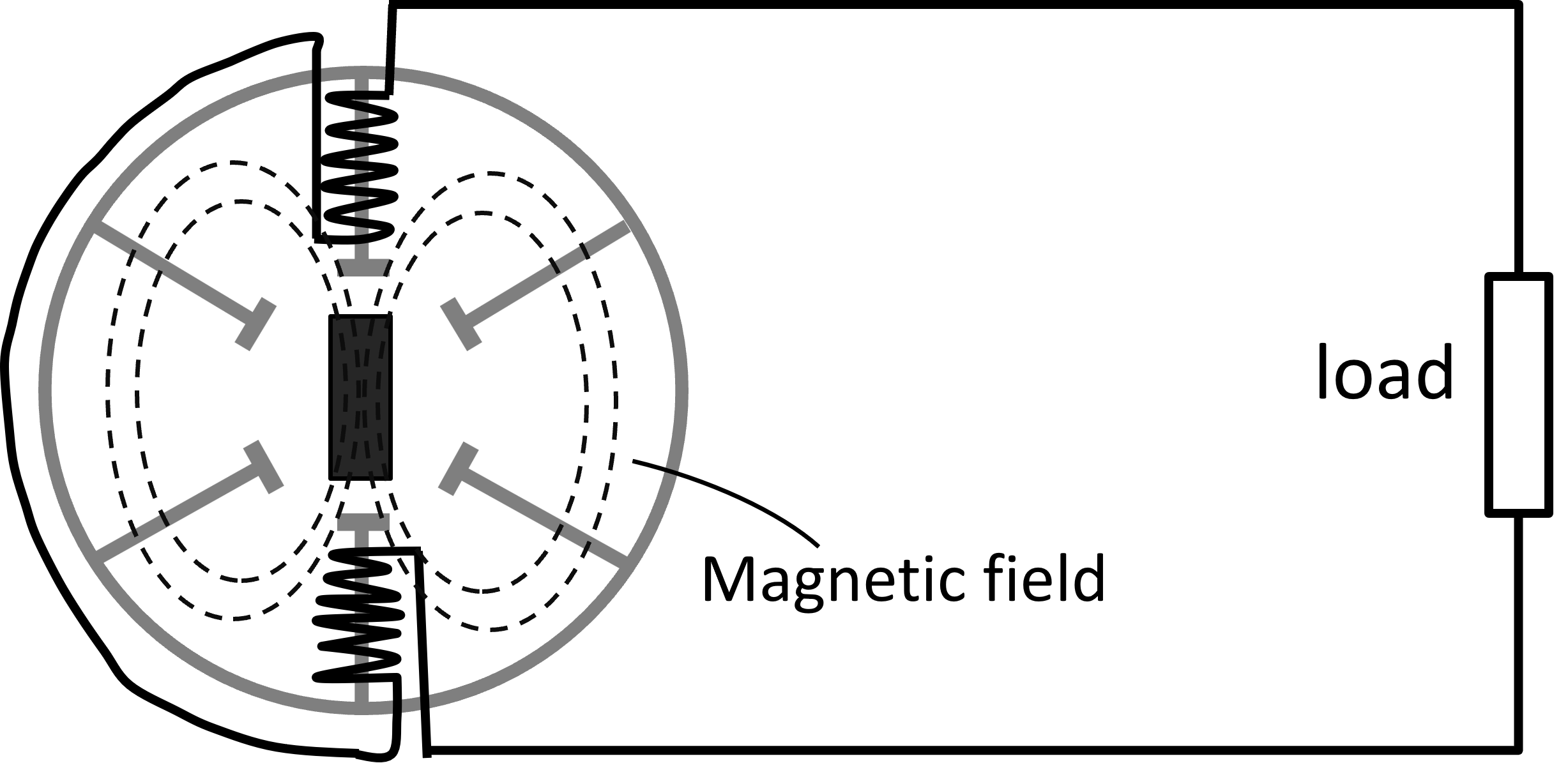
To have more phases, the generator should have independent coils that are placed at a certain angle from each other. In three-phase electricity, the coils are positioned 120° apart as shown in the diagram below.
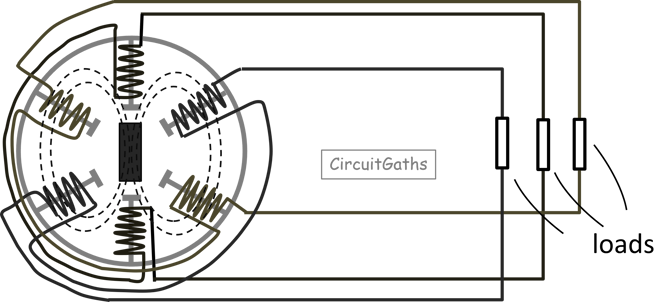
In the previous diagram, we have six conductor. Three are supplying power to the loads and the other three are returning to the generator from the loads to make the circuit complete.
We can reduce the number of conductors by connecting the generator and three-phase loads in either star configuration or delta configuration. Single-phase loads will receive power by connecting them to any phase and the neutral wire that emerges from the star configuration.
Three-phase generators and distribution transformers are usually connected in a star configuration, so that a neutral wire is obtained for single phase loads to be connected.
Star configuration
A star configuration is where the three live conductors are each connected to a load or coil of a generator and the ends are joined together as shown in the following diagram.
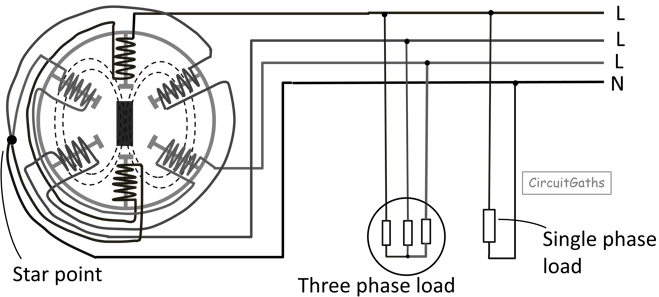
The point where the three live conductors are joined is where the neutral wire emerges.
Delta configuration
A delta configuration is where the three live conductors are each connected to a load and the outlet from each load is connected to the start of another load as shown in the following diagram.
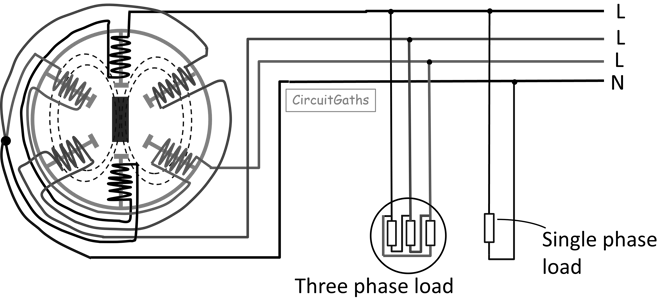
If we measure the voltage between the phase and neutral conductor, the voltage we get is called phase voltage. If we measure the voltage between two live conductors, the voltage we get is called Line voltage.
Phase voltage differs from line voltage. Line voltage is usually higher than phase voltage because on line voltage, we are combining the voltages of two phases.
Line voltage = phase voltage × square root of three
If you have made it this far, thanks for reading. Please consider subscribing to our YouTube channel for more electrical tutorials.